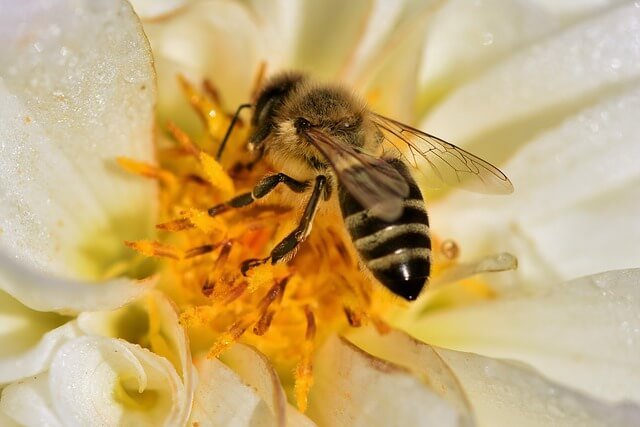In case you haven’t seen all the “Save the Bees” memes on FB and Instagram, we hate to be the bearers of bad news. Bees are in trouble. Big time. The numbers have been declining all over the world.
Now, at the risk of being a bit controversial, it may be tempting to shrug your shoulders and say “So what? Species go extinct every day. It’s not news.” Herein lies the problem. As with any delicate balance, there are always repercussions. When a predator goes extinct, prey animals multiply until they use up all the food sources, then they starve. If a prey animal goes extinct, then to predators starve. But what happens when the homely honey bee goes extinct?
The Problem
Bees are pollinators. Which means we have them to thank for flowers, fruits, vegetables, and any other product that requires pollination to produce. What happens to OUR food sources when pollinators are gone? Plus, honey bees are also responsible for the world’s supply of honey, which many people use for a variety of dietary and medicinal purposes. Honey is naturally anti-bacterial, and is used in many health and beauty products, as well as in recipes.
Researchers are still sorting out all the reasons that honey bee populations are declining, but the evidence is pretty clear that the over-use of certain chemical pesticides, called neonicotinoids, are the primary culprit. First introduced in the 1990s, these chemicals kill pests by attacking the central nervous systems of the targeted insect. The problem is, these chemicals also kill beneficial insects, such as bees, lady bugs, and other insects.
The EU has banned three of these types of pesticides: clothianidin, imidacloprid and thiamethoxam. France recently banned an additional two: thiacloprid and acetamiprid. By contrast, the US has recently lifted restrictions on these chemicals, allowing them to be used near wildlife refuges and protected areas, with little to no oversight.
Colony Collapse Disorder is the scientific term for bee population decline, and the researchers have determined that hives are impacted in a couple of ways: reduced sperm count, leading to decreasing reproduction rates; and interference with homing and memory, which leads to bees failing to return to the colony. Eventually, the colony collapses.
So what can the backyard gardener do?
There are numerous ways that backyard gardeners can help provide a safe haven in their yards for honey bees. And no, you don’t need to become a beekeeper and wear protective gear to do it. The major factor is to be aware of what chemicals you spray on your yard. Avoid the five neonicotinoid chemicals, and opt for natural products when you can.
When purchasing greenhouse flowers and plants, look for a label indicating that the plant has been treated with neonicotinoid. Avoid these products and choose plants that haven’t been treated. If there is no label, do your homework and ask questions before buying.
Rethink the fate of the dandelions in your yard. Dandelions are early spring food for bees, when perennial flowers haven’t quite awakened from their winter slumber, and fields haven’t been planted yet. Using chemicals to kill off the dandelions removes a much needed food source.
Plant beneficial plants that will attract honey bees. These beautiful flowers not only look great in your flower beds and have great curb appeal, but they will provide the necessary food sources for beneficial pollinators, such as the honey bees:
- Sunflowers
- Penstemon
- Coneflower
- Black-Eyed Susan
- Coneflower
- Lavender
- Rosemary
- Aster
The perfectly manicured lawn comes at a high price. Perhaps it’s time to shift our perspective toward a more natural lawnscape, which encourages natural wildflowers and pollinator-friendly flower gardens.
Whether you are looking to buy or sell a home in Northern Virginia, we are always here to help with all your real estate needs! If you are unsure of your home’s value or if you are thinking about buying or selling, contact Jason at 703-298-7037 or Jason@JasonAndBonnie.com.


